Android home launchers have various features and settings depending on the device manufacturer or OS version. There are many ways to organize your home screen layout to keep your main page clean. Samsung Galaxy phones offer unique home screen features that allow you to customize your experience. Regardless of your Android device, they provide a slightly different home screen experience. Here’s how to organize your home screen to cut back on icon or app clutter.
The examples below show a Samsung Galaxy A23 smartphone running the One UI 5.1 launcher. The steps may look different depending on your device’s OS version and model.
Group apps into folders for better organization
Rather than having individual icons on your home screen and app drawer, categorize them using folders. This makes it easier to locate an app if you want to avoid scrolling through the app drawer. It also allows you to organize your home screen layout in a way that works for you. For example, you can have a folder with your favorite games and one for work or productivity. Place your most used folders on the first page of your home screen for easy access.
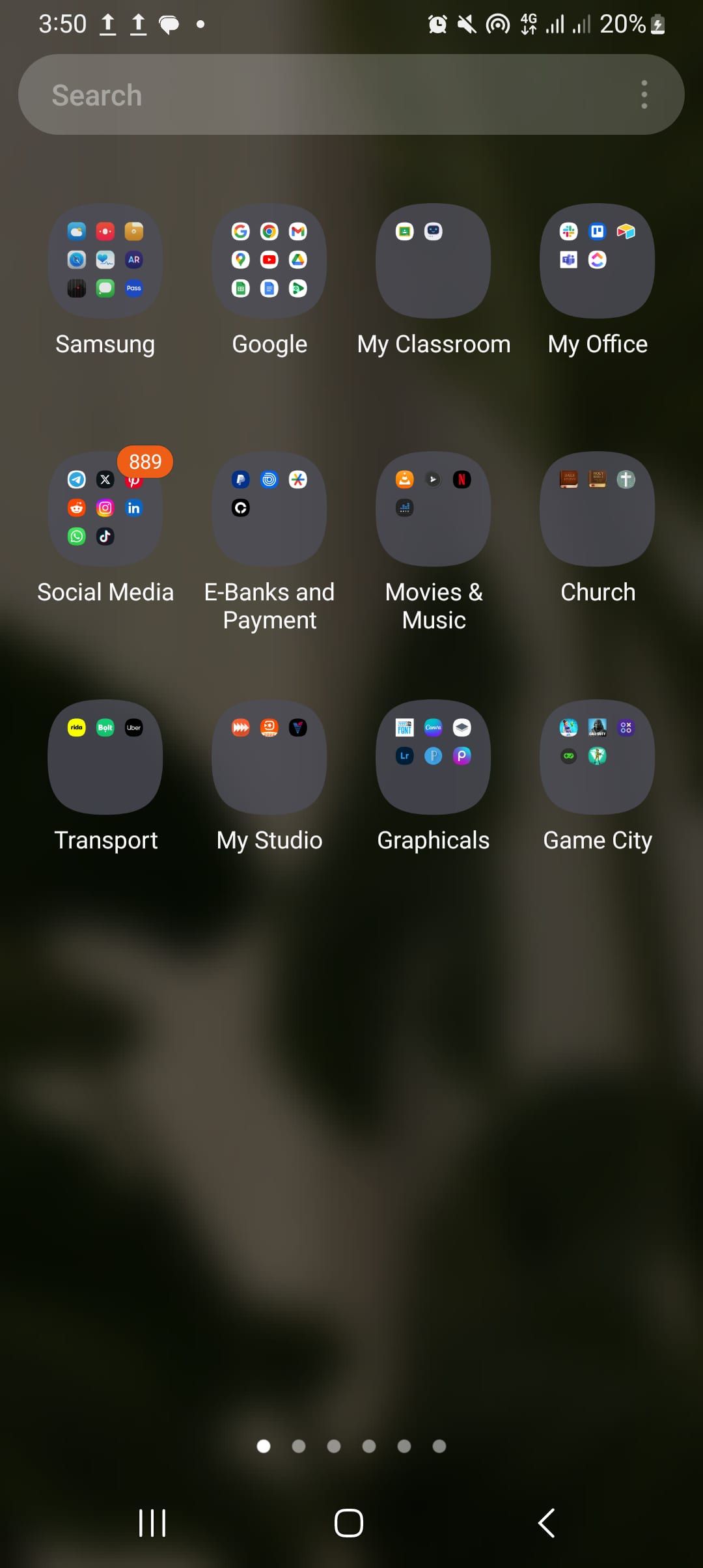
Use the following steps to create folders and group apps:
- Swipe up on the home screen to open the apps screen.
- Drag and drop one app on top of another to group them.
- Tap the new folder to give it a different name.
- Alternatively, long press an app and tap Select.
- Tap other apps to select them.
- Tap Create Folder in the upper-right corner.
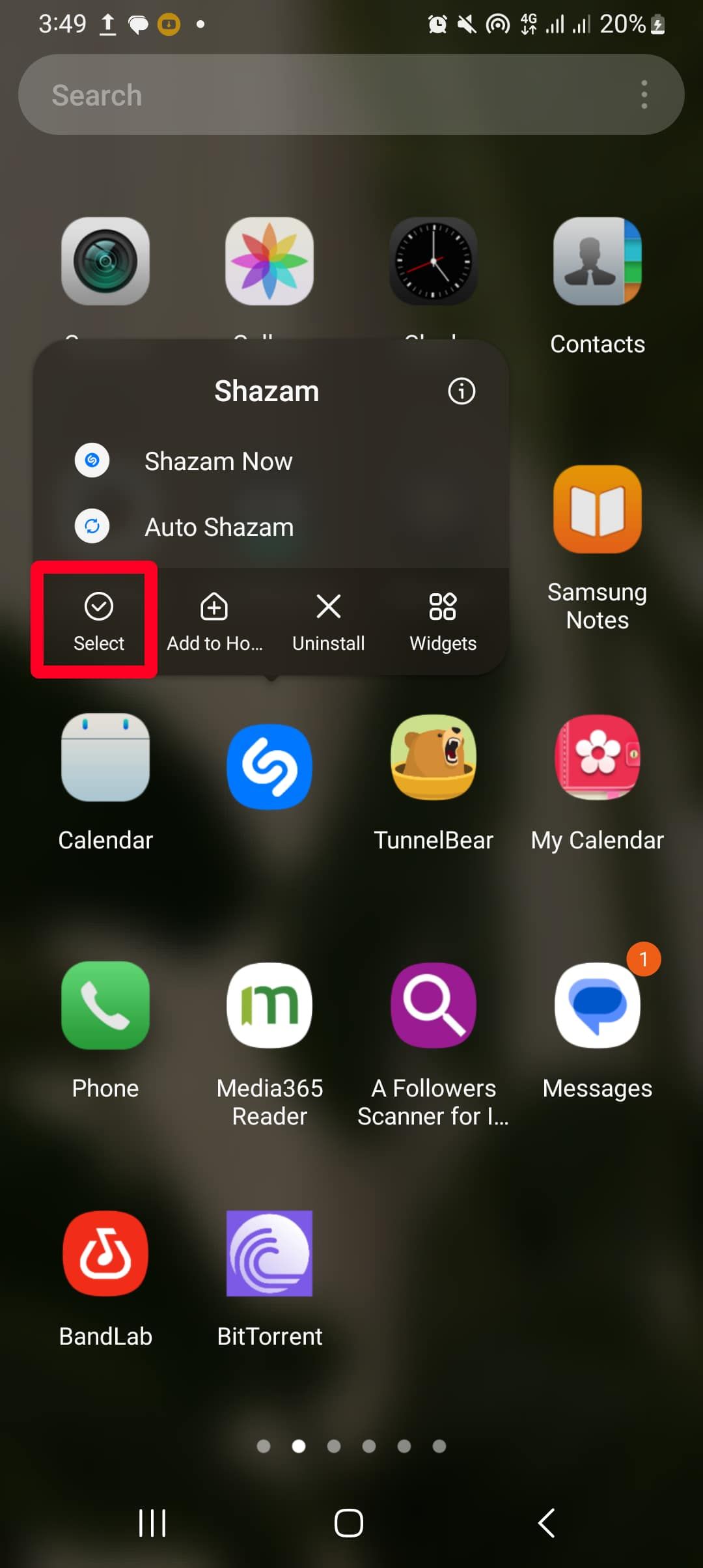
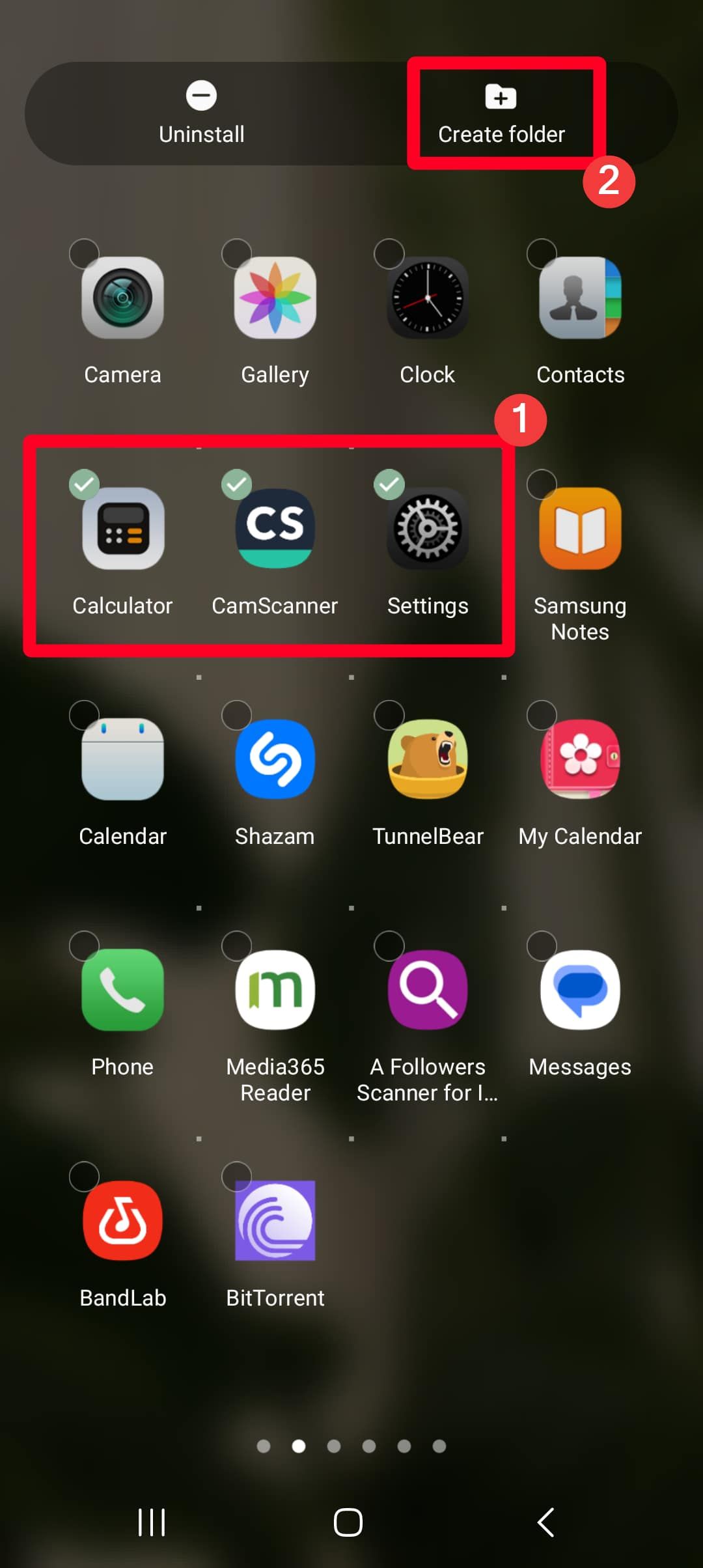
- Give your folder a name.
- Tap + to add more apps to the folder.
- Tap the gray circle beside + to color the folder.
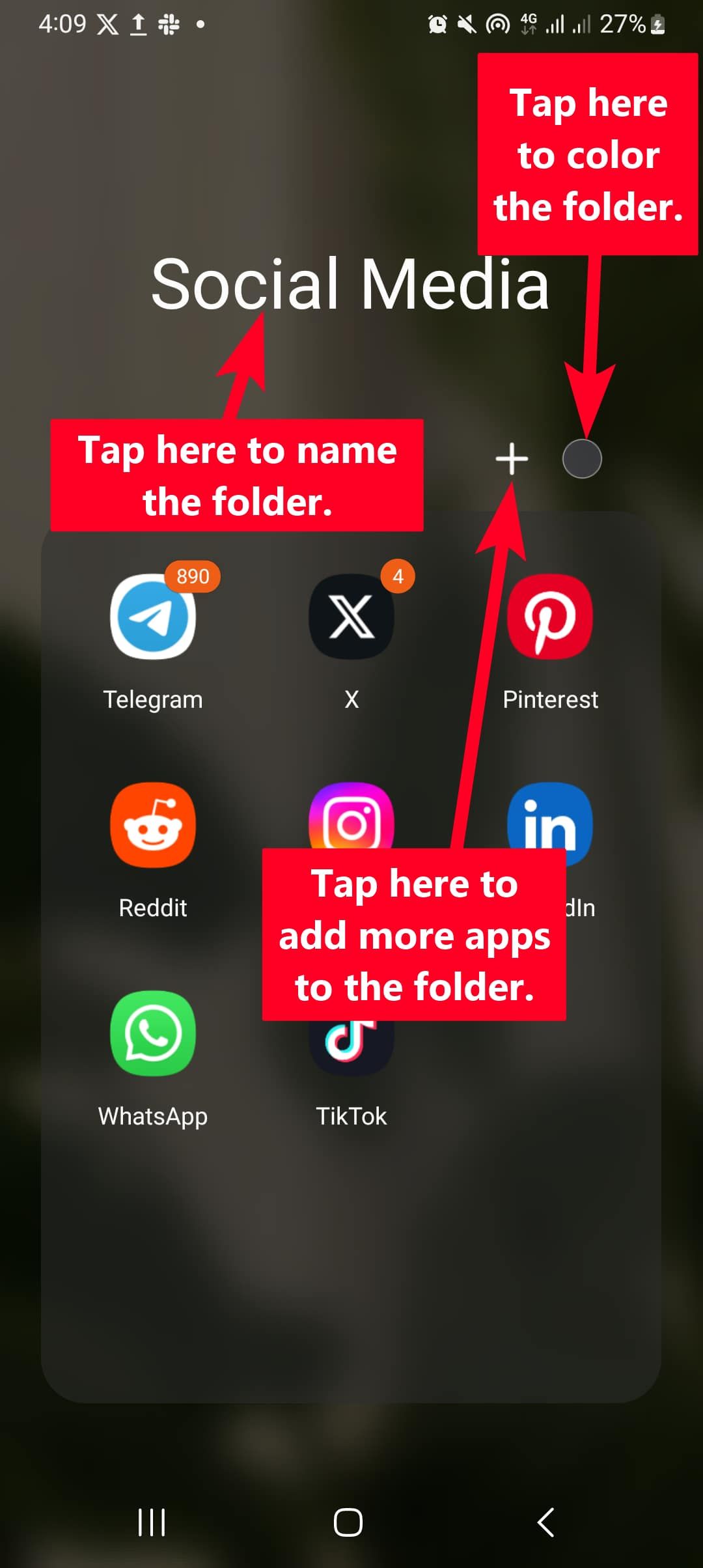
- Tap the back button in the navigation bar to save the changes and return to the apps screen.
Not all stock home launchers allow you to add more apps to a folder by pressing a button. You may need to drag and drop one app at a time until all your apps are added.
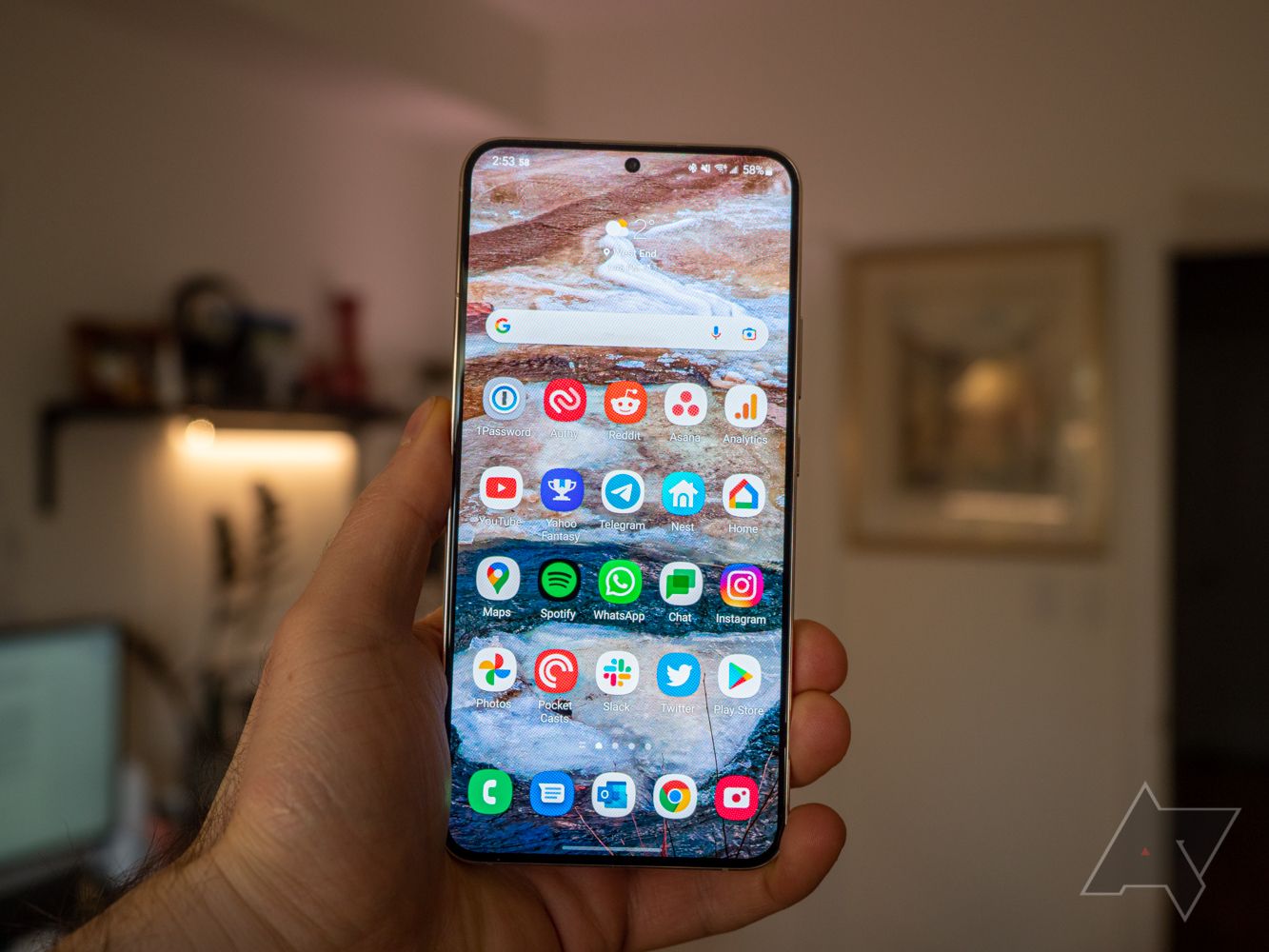
Related
How to set up One UI 5 homescreen on Samsung Galaxy phones
One UI 5 takes the homescreen customization to the next level
Use only your Android home screen to simplify your experience
Most Android smartphones offer a home screen layout and a separate app drawer by default. However, Samsung Galaxy phones running One UI have an extra option to merge the two features. This setting removes the app drawer and places your app library on the home screen. It’s similar to what Apple does on the iPhone.
However, swiping up displays a search screen instead of the original app drawer feature. If you don’t like this new home screen layout, you can easily switch back to the previous option. Any folders, widgets, or app icons will be restored to their original placement on your home screen.
To combine your home screen and app drawer on a Samsung phone, do this:
- Long press an empty spot on the home screen, then tap Settings. Alternatively, go to Settings > Home screen.
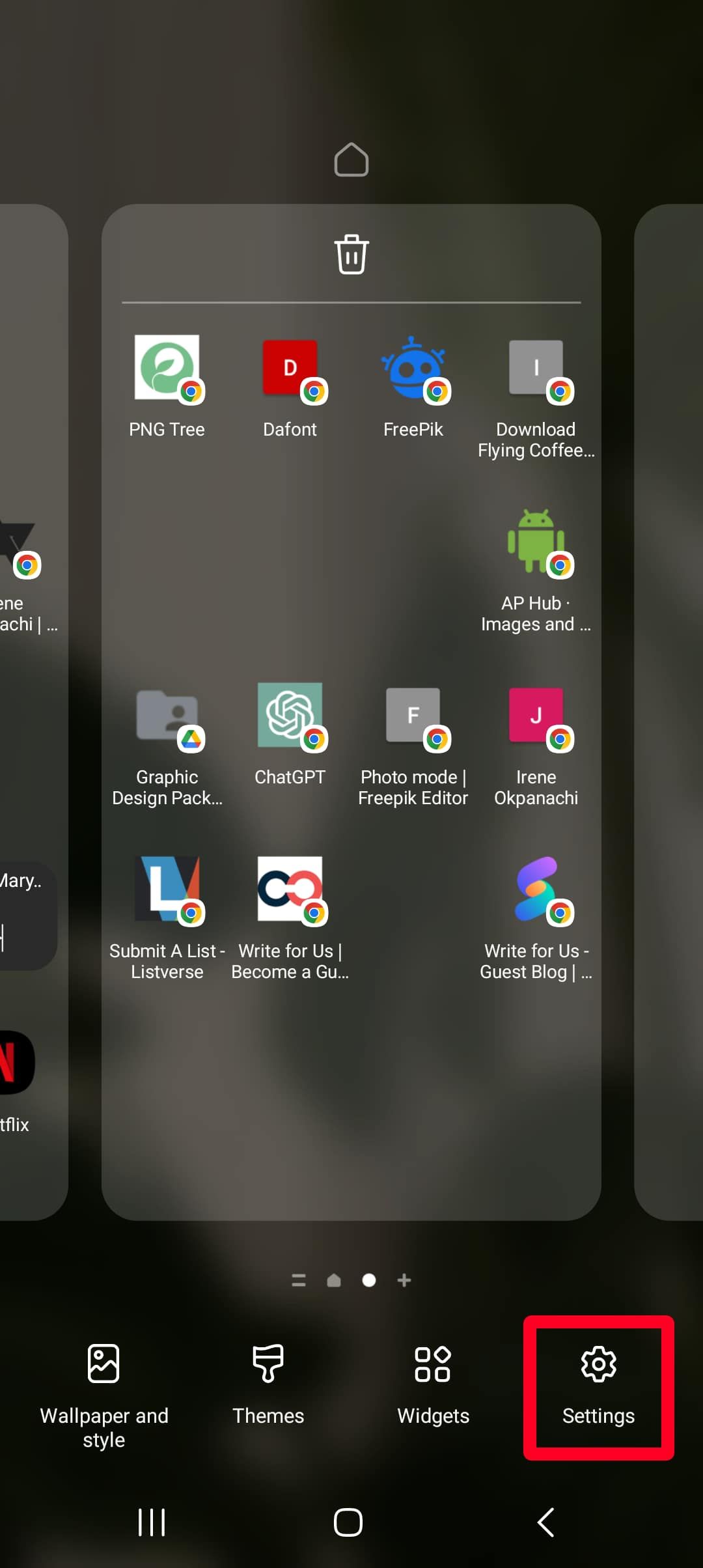
- Tap Home screen layout.
- Select Home screen only and tap the Apply button.

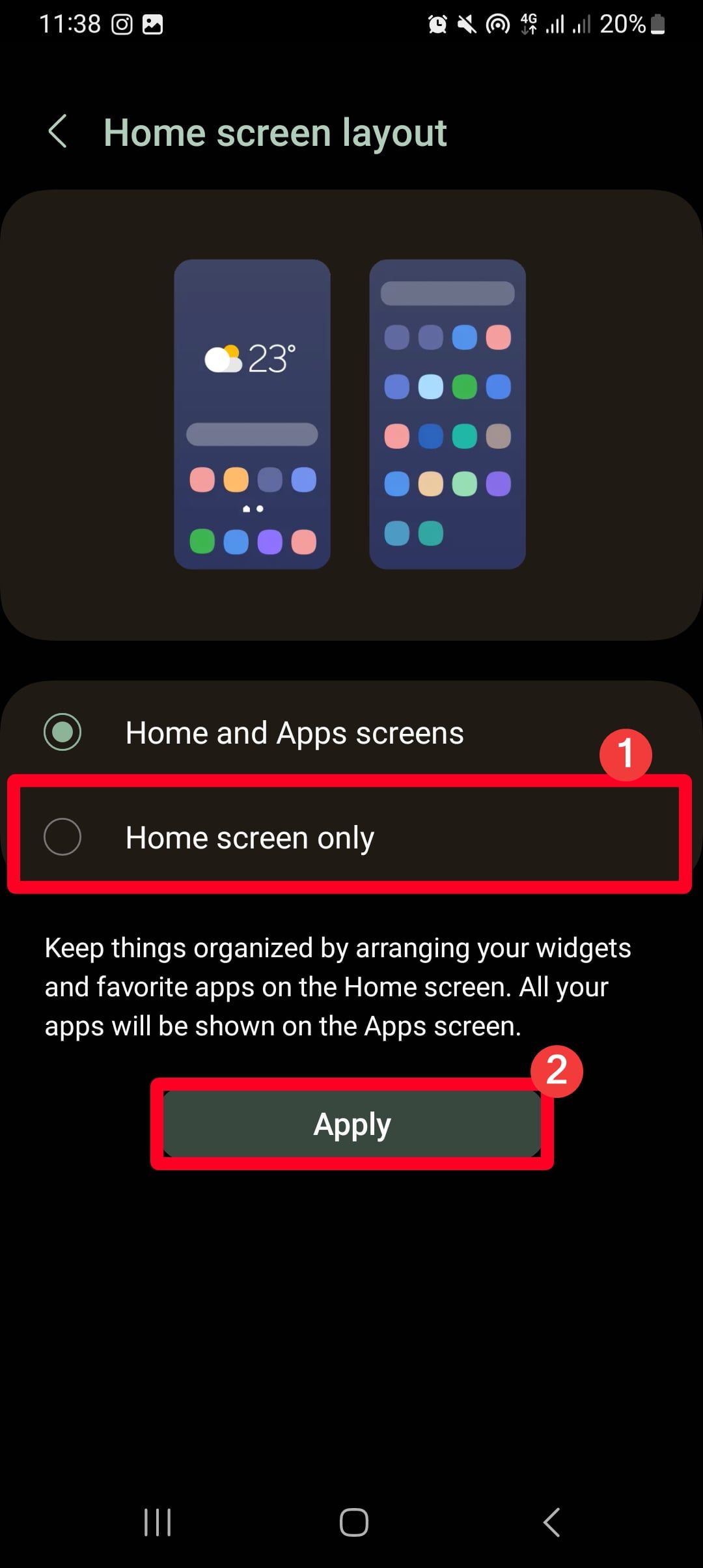
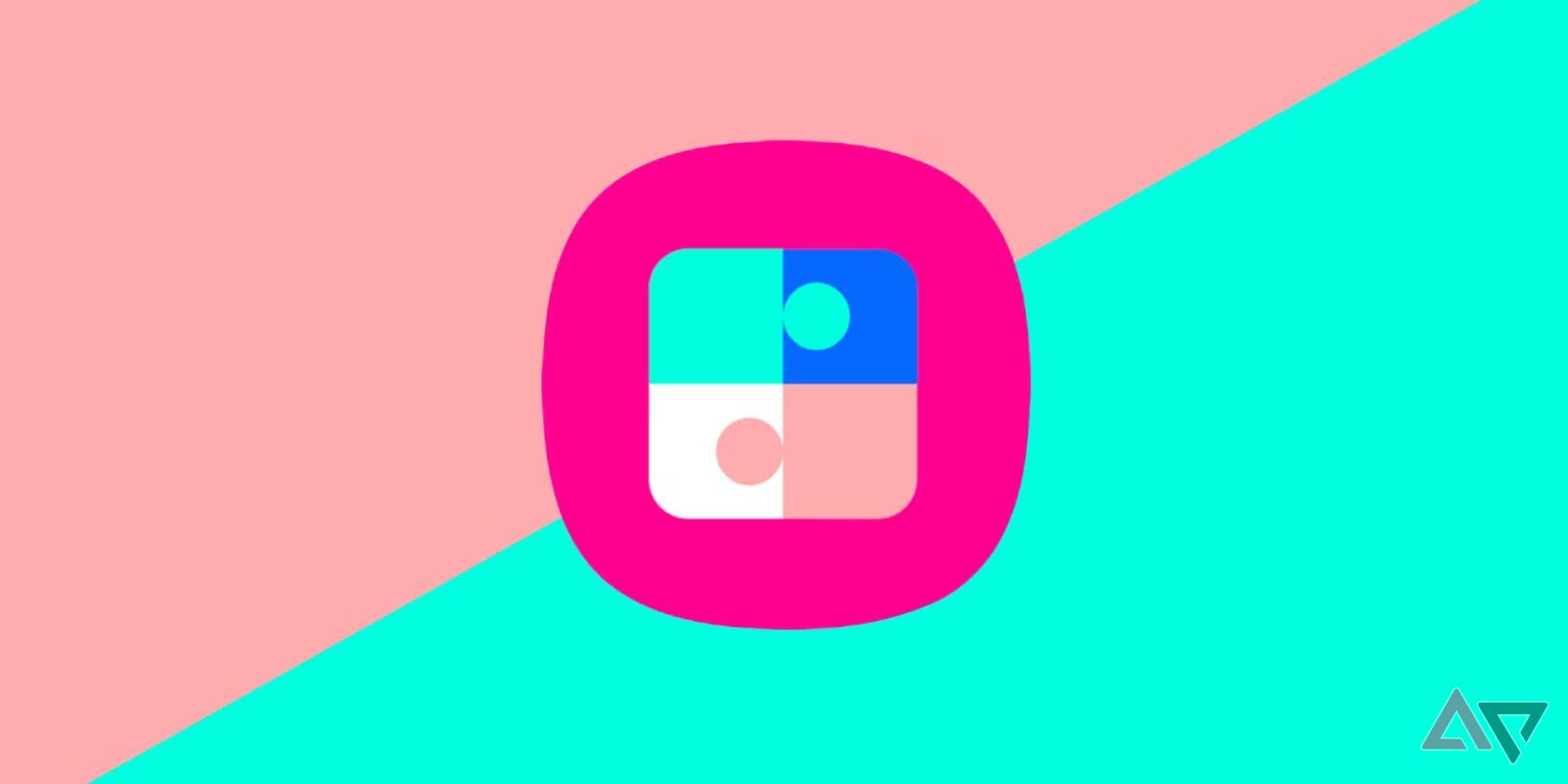
Related
Samsung Good Lock: Everything you need to know
Unlock the true power of your Samsung Galaxy
Widgets are handy home screen shortcuts that allow you to access specific features of an app without opening it. For example, you can view your Gmail inbox or Google Calander events from your home screen at a glance. You can also place widgets where you want while adjusting their sizes, giving you more control over your home screen.
To add widgets to your home screen, use the following steps:
- Long press an empty part of the home screen.
- Tap Widgets.
- Select an app.
- Tap any of its widgets.
- Tap Add to pin it to the home screen.
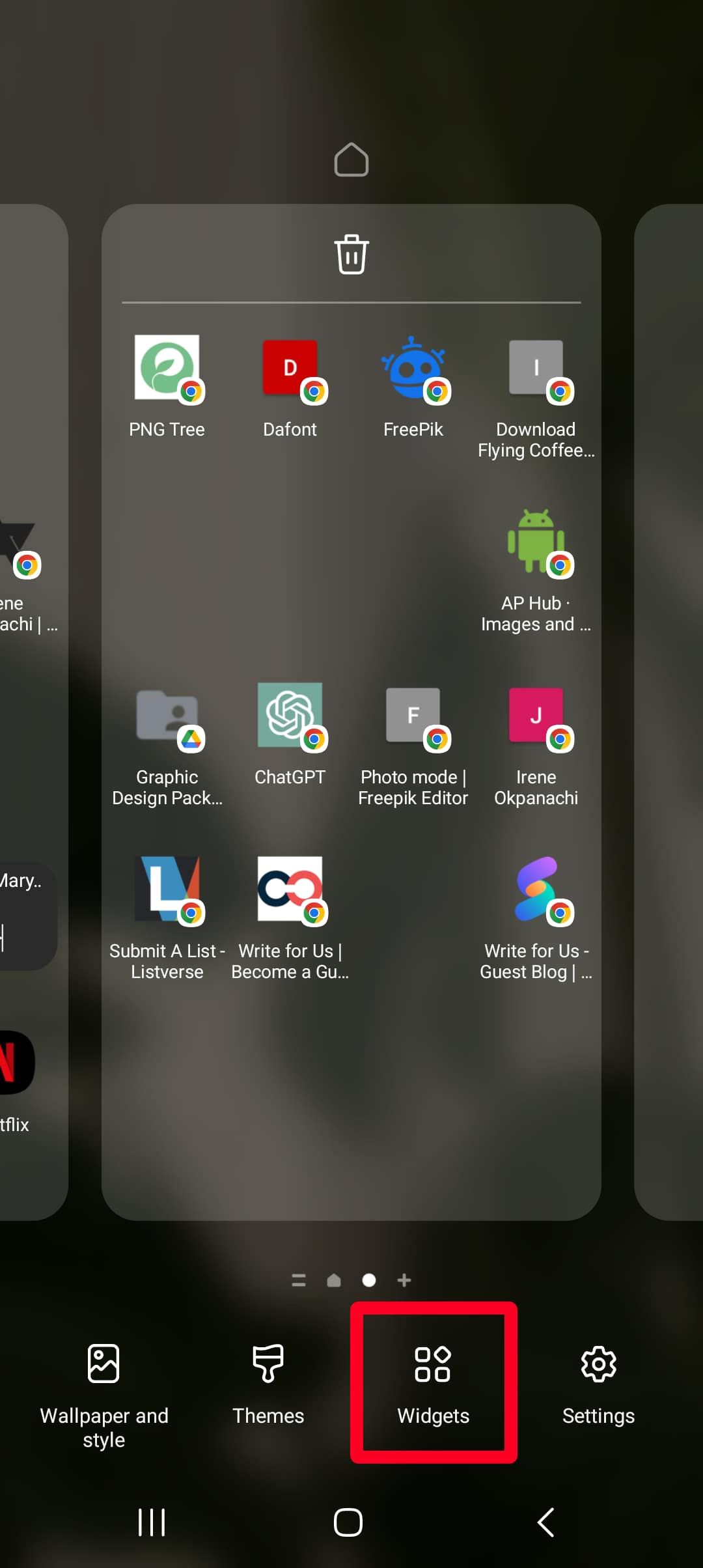
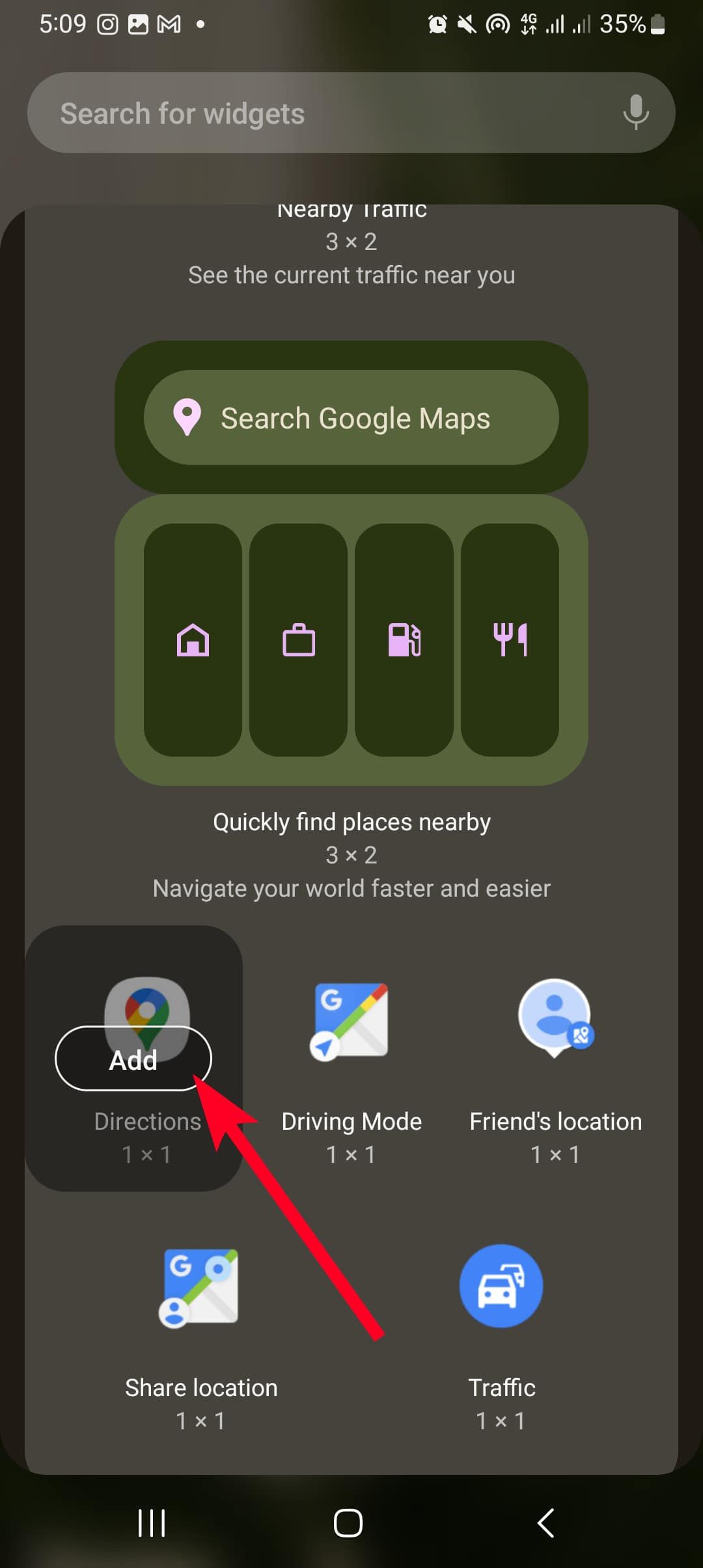
- If the widget allows resizing, use the tiny circles on its edges to adjust it.
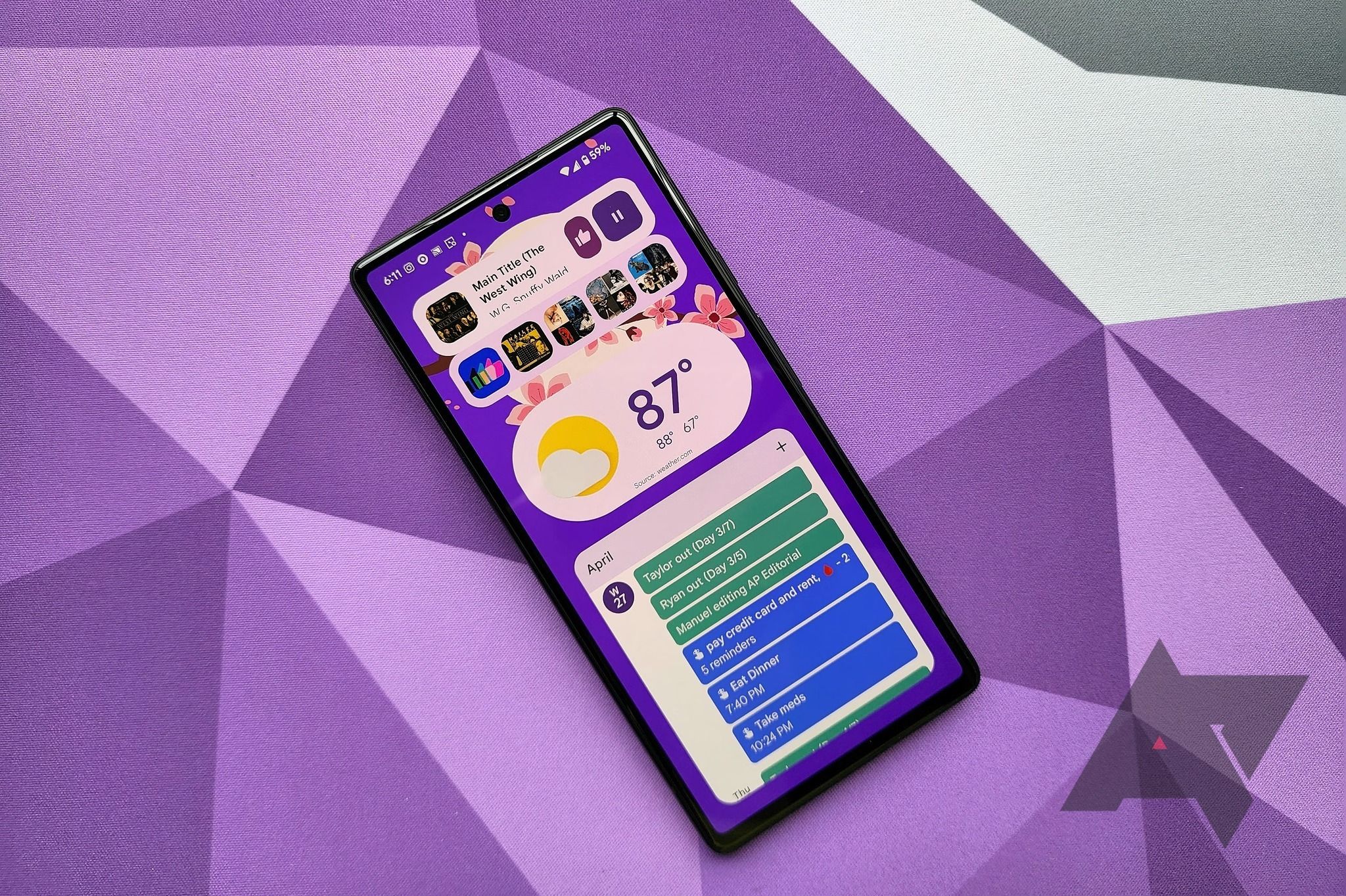
Related
The 12 best and most useful Android widgets on the Google Play Store
Make your home screen more than just an app launcher
Lock your home screen layout to prevent any changes
Setting up your home screen layout takes time and effort the first time around. When you’re happy with your folders, widgets, and app icons, lock them in place. You’ll keep your perfect home screen layout and won’t accidentally move items around. You can still long press an app to view its shortcut actions, but you can’t move them around.
To lock your home screen layout in place, check out these steps:
- Long press a vacant spot on the home screen.
- Go to Settings.
- Tap the toggle switch beside Lock Home screen layout.
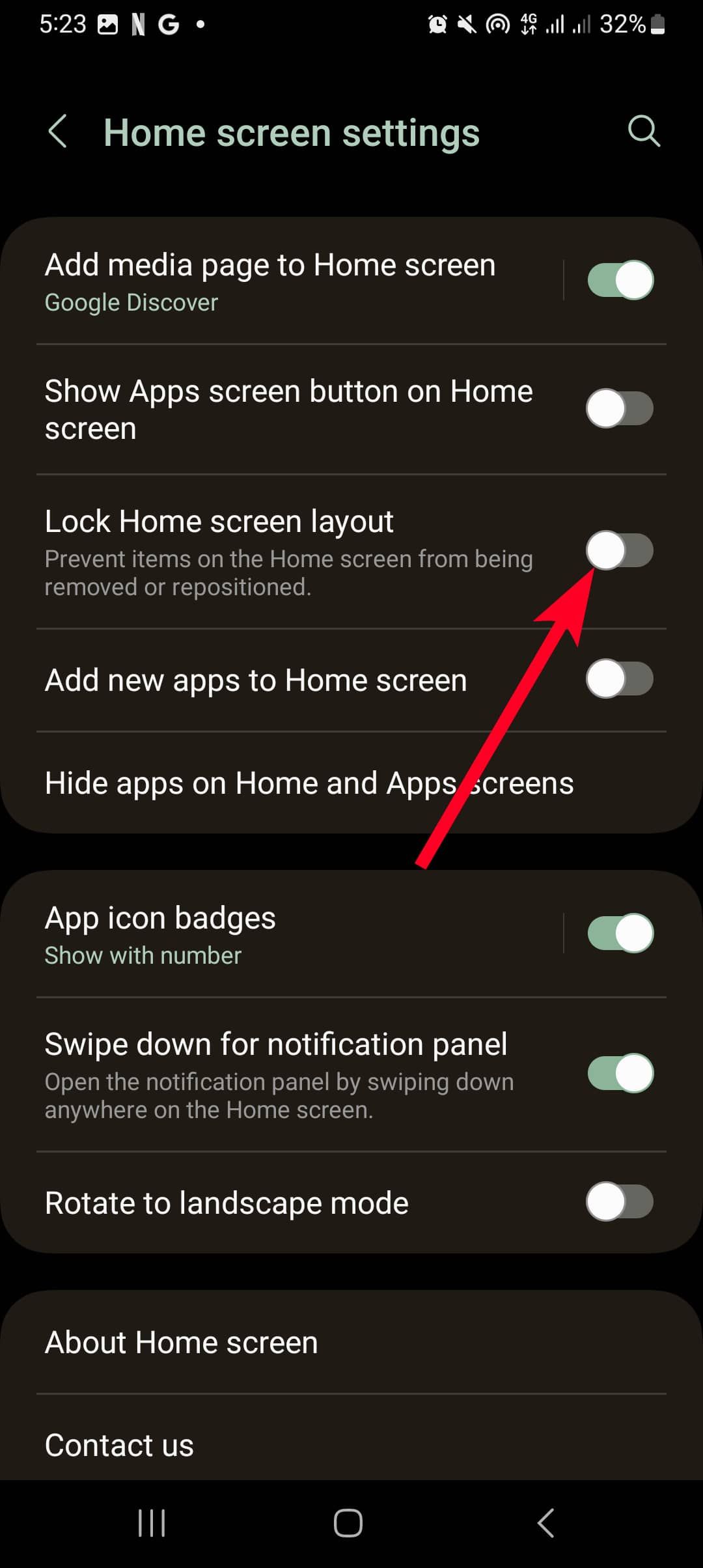
Not all stock home launchers allow you to lock the home screen layout in place. However, many third-party launchers support this feature if you want to try it.
Sort apps alphabetically to find what you’re looking for
Many home launchers sort apps alphabetically, but Samsung Galaxy phones using One UI have a Custom order option. This organizes your apps by the date they were installed or updated. However, you can switch the sorting option to alphabetical order to make finding apps easier. This also organizes your apps inside folders, creating them for you automatically. Turning on the alphabetical sorting setting doesn’t affect your custom order, so you can revert to that as needed.
To sort your app drawer using alphabetical order on a Samsung phone, do this:
- Swipe up on the screen to open the apps screen.
- Tap the overflow menu (the three-dot icon) in the upper-right corner.
- Tap Sort.
- Select Alphabetical order.
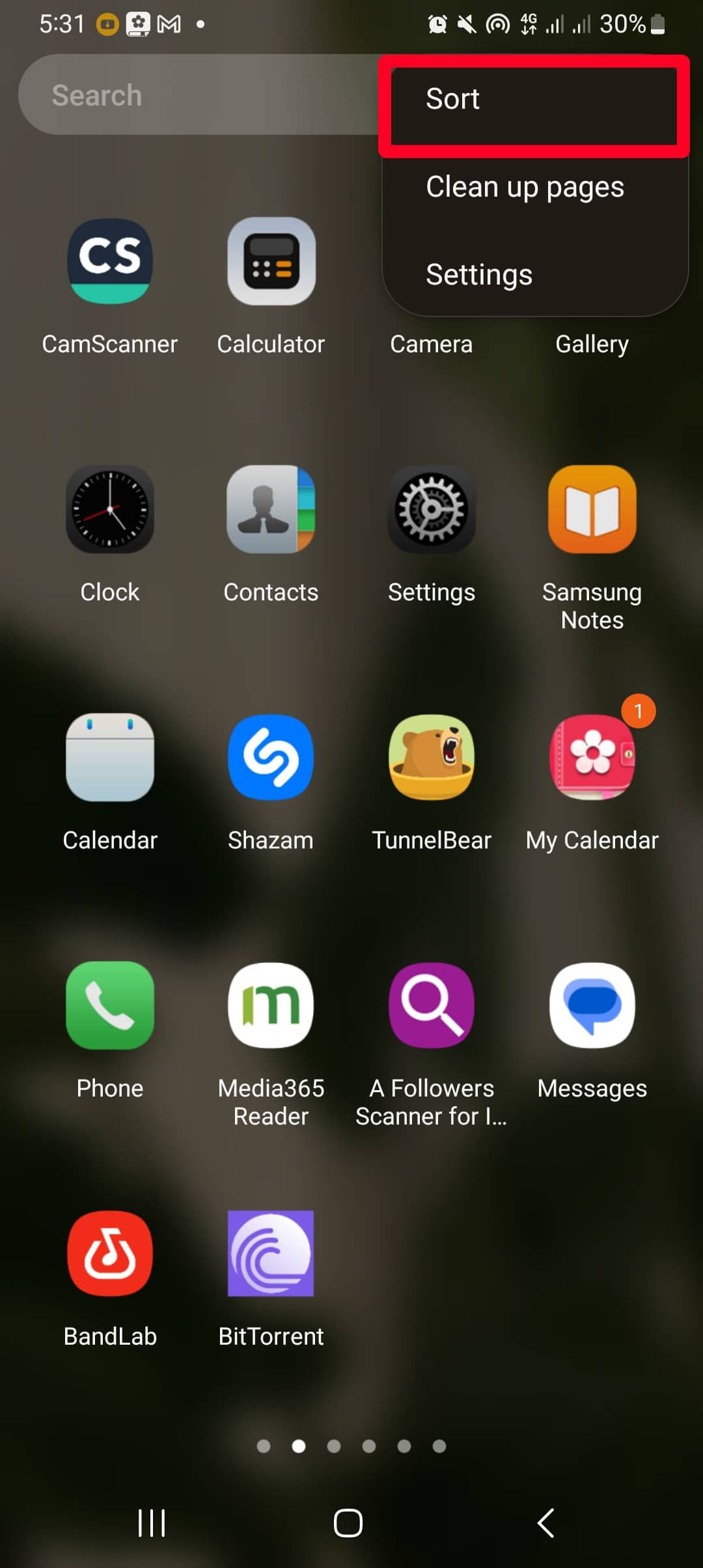
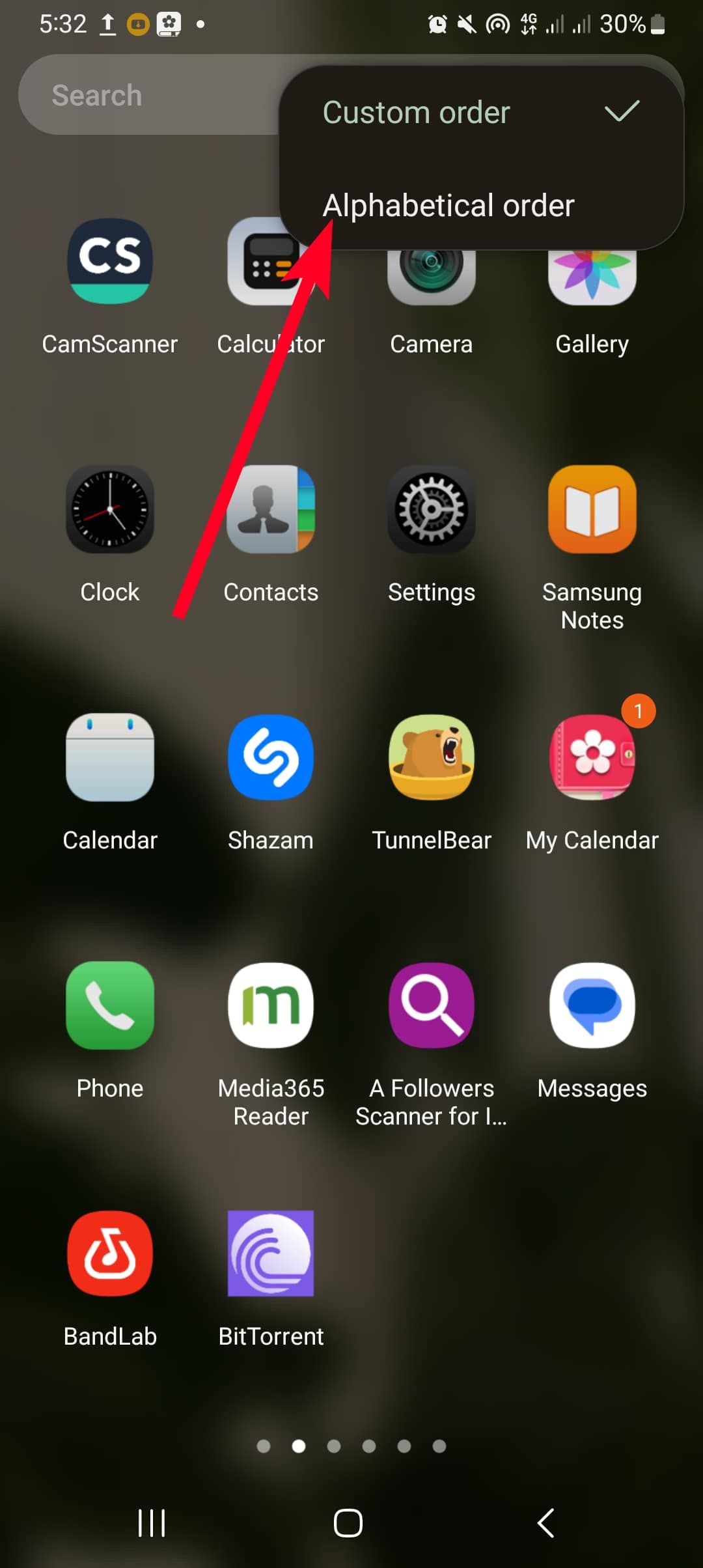
Adjust grid sizes to better fit your home screen needs
You may prefer large app icons so that you can see them better. Other times, you want them small to fit on one screen. You can’t scale them individually, but you can adjust their grid sizes. That is, choosing how many apps you want to appear in rows or columns at a time. This feature doesn’t affect the icon size, but it gives the illusion of doing so. Afterward, customize the icons to follow a theme if your device allows it.
Android’s default home screen and apps screen grid size is 5X5, and you can reduce it to 4X5 or increase it to 5X6. For folders, you’re limited to sizes 3X4 and 4X4. These sizes are available on the Android 12 OS and newer versions. Lower versions have fewer options or need third-party launchers to customize the icons. Depending on your device model, you can do it from the home screen or settings menu.
To adjust the grid sizes for your home screen layout, try these steps:
- Long press an empty spot on the home screen.
- Tap Settings.

- Select either Home screen grid or App screen grid and Folder grid layout options. On some devices, these options are in the Wallpaper & style menu.
- Select a grid size to preview it. You can’t preview Folder grid sizes.
- Tap Done to apply the changes.
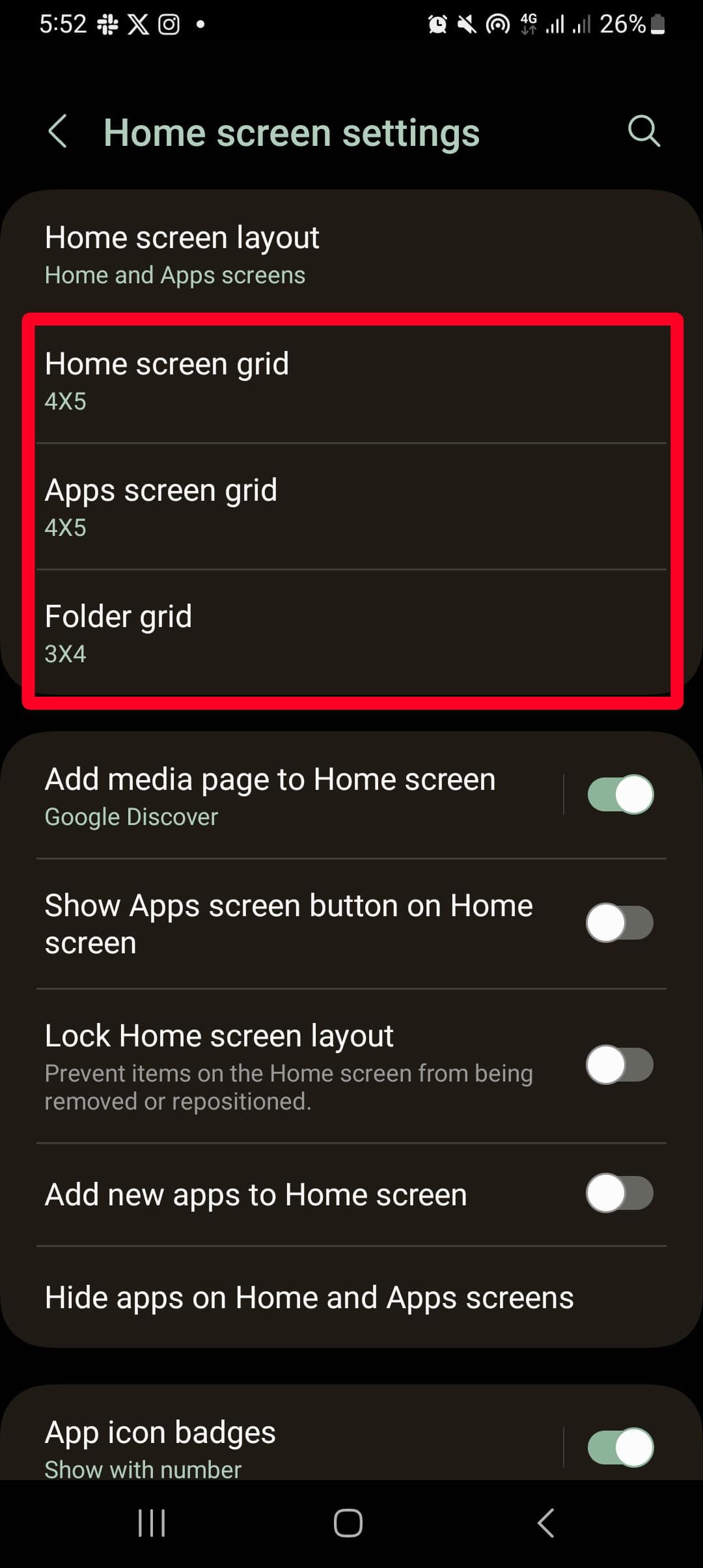
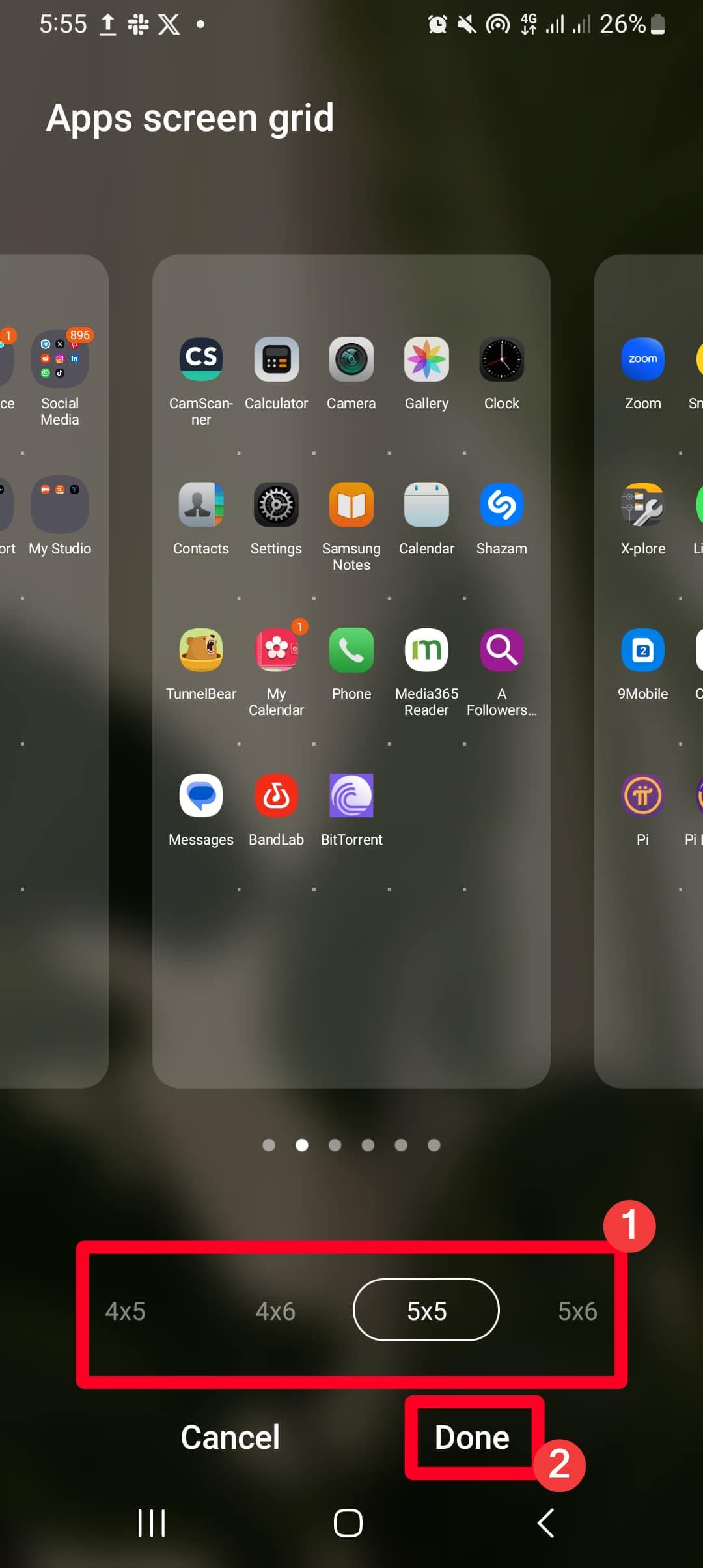
Uninstall unnecessary apps to save space and remove icons
There’s no better way to organize your phone than to eliminate unnecessary files. Your phone provides multiple methods to uninstall apps. Remove them from the home screen, app drawer, settings menu, and Google Play Store. Preinstalled system apps are more challenging to uninstall, but you can deactivate preinstalled apps so that they don’t work in the background or appear among your apps. Use the following steps to get started.
Uninstall apps from the apps screen
- Swipe up to open the apps screen.
- Long press an app and tap Uninstall.
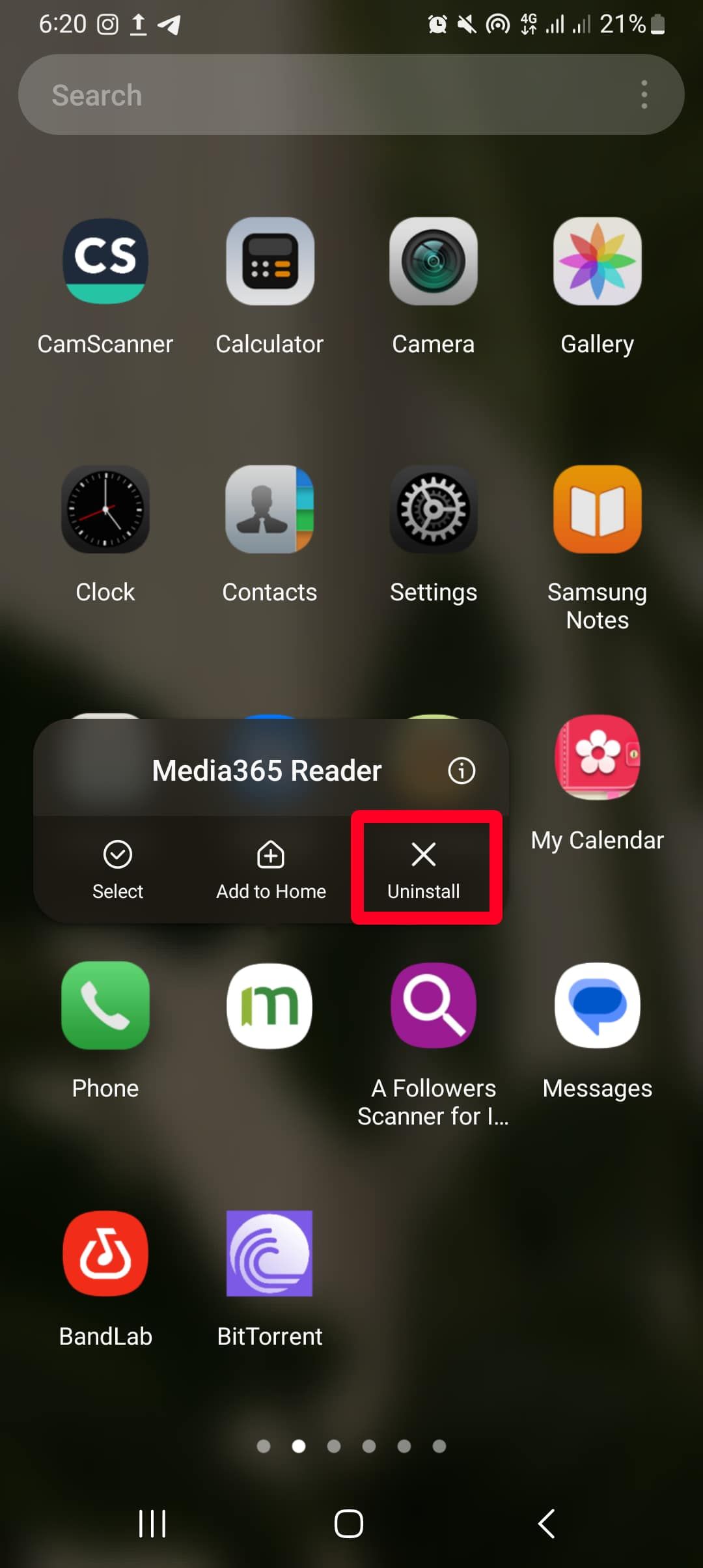
- Select OK for confirmation.
Uninstall apps from the home screen
- Long press an app.
- Tap Uninstall.
- Select OK for confirmation.
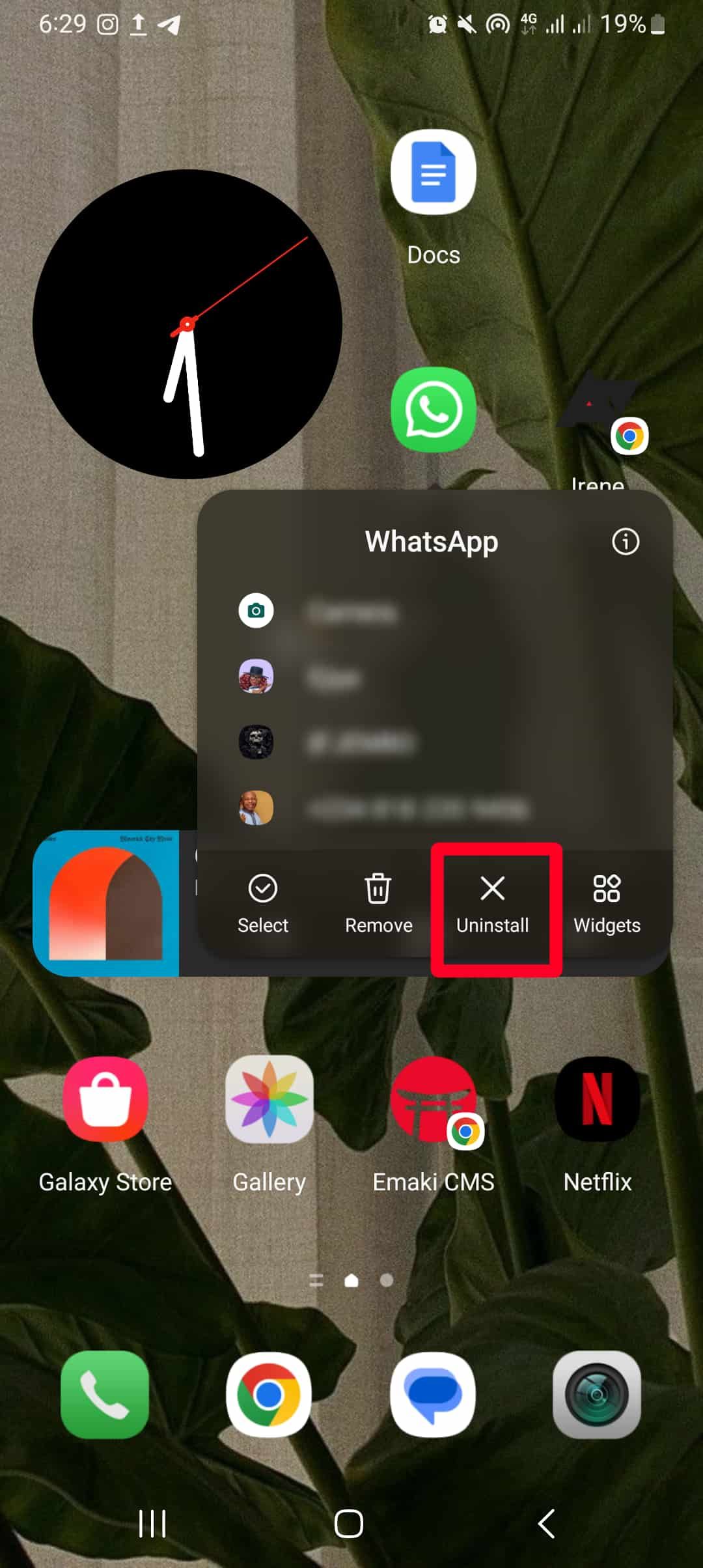
- To erase widgets and shortcuts, long press them and tap Remove.
- Go to Settings > Apps.
- Select an app from the list.
- Tap Uninstall.
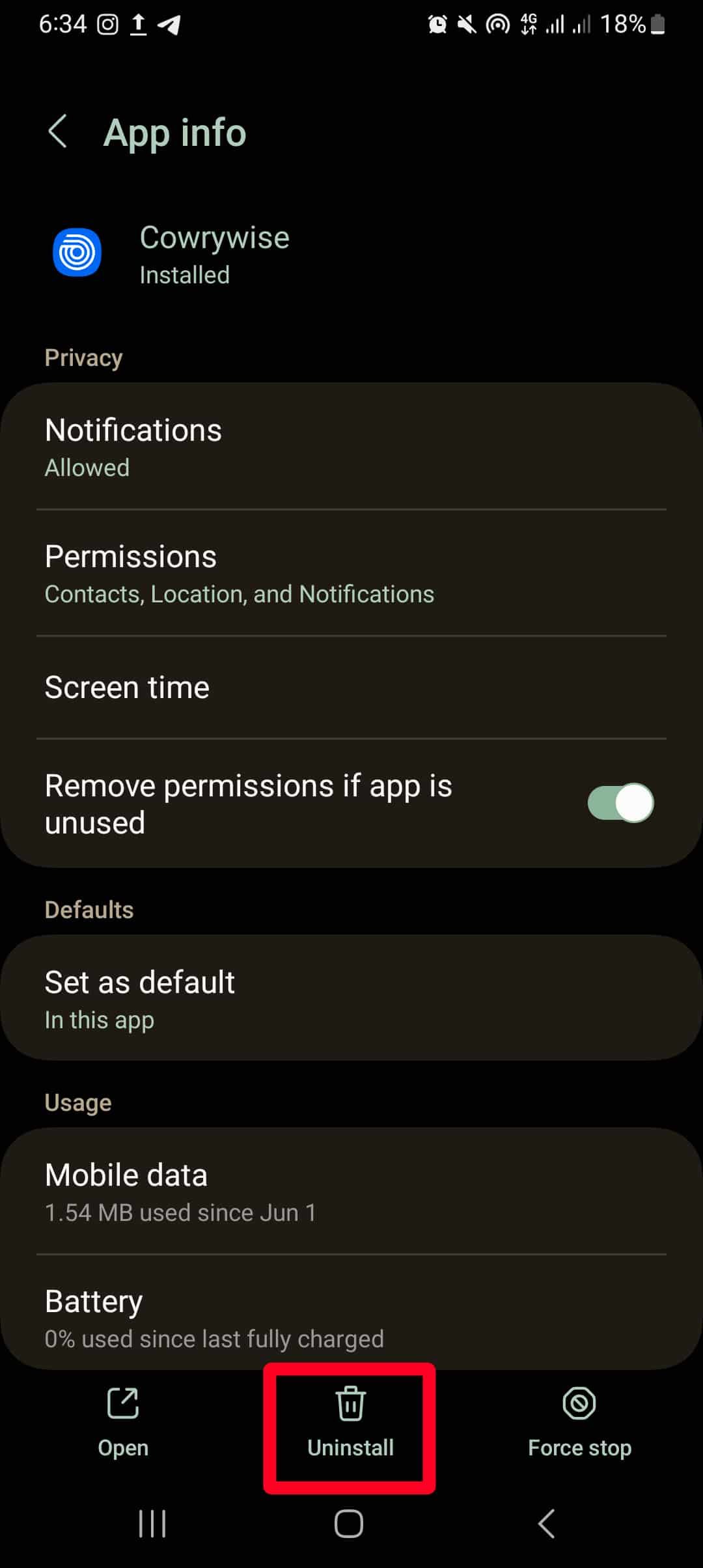
- Select OK for confirmation.
Uninstall apps from the Google Play Store.
- Open Google Play Store.
- Tap your profile icon in the upper-right corner.
- Select Manage apps & devices.
- Tap Manage.
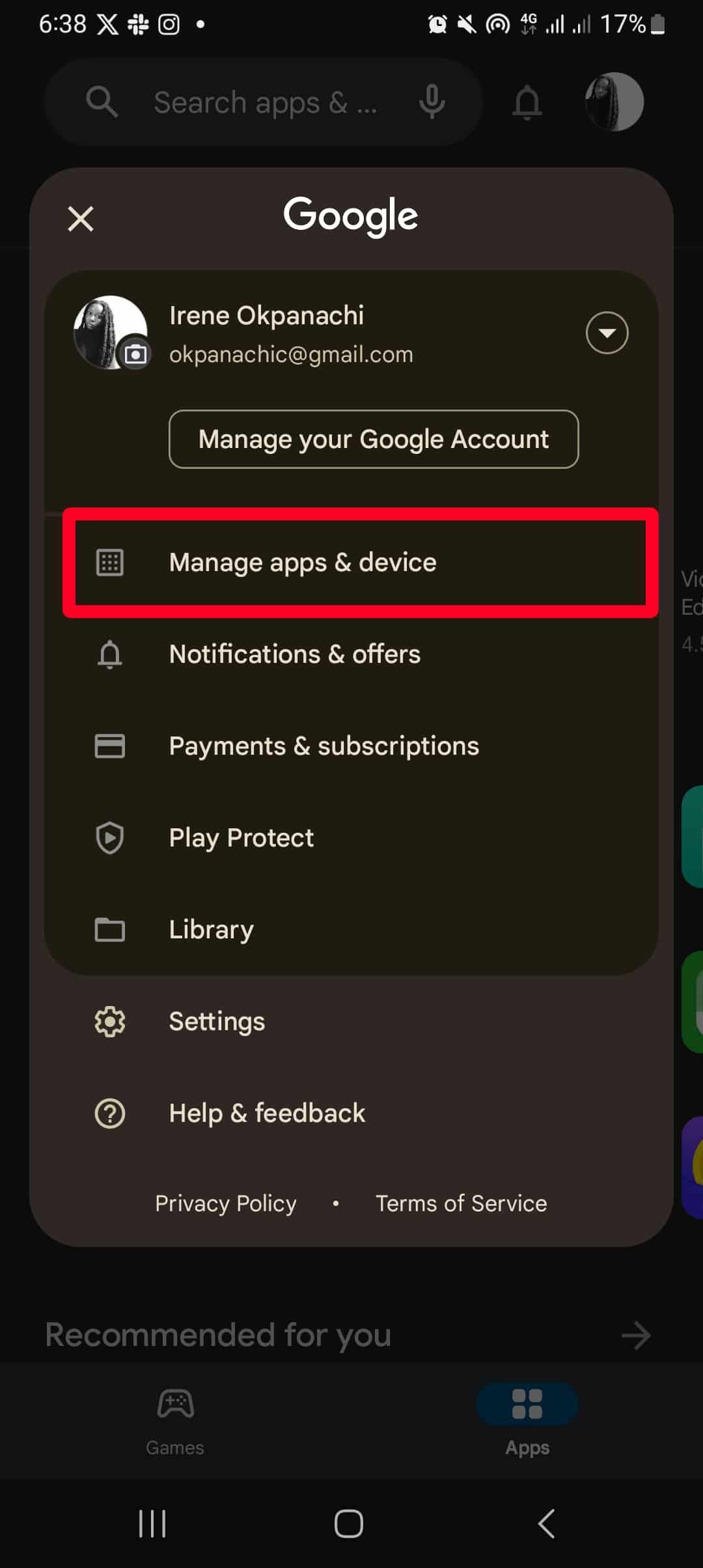
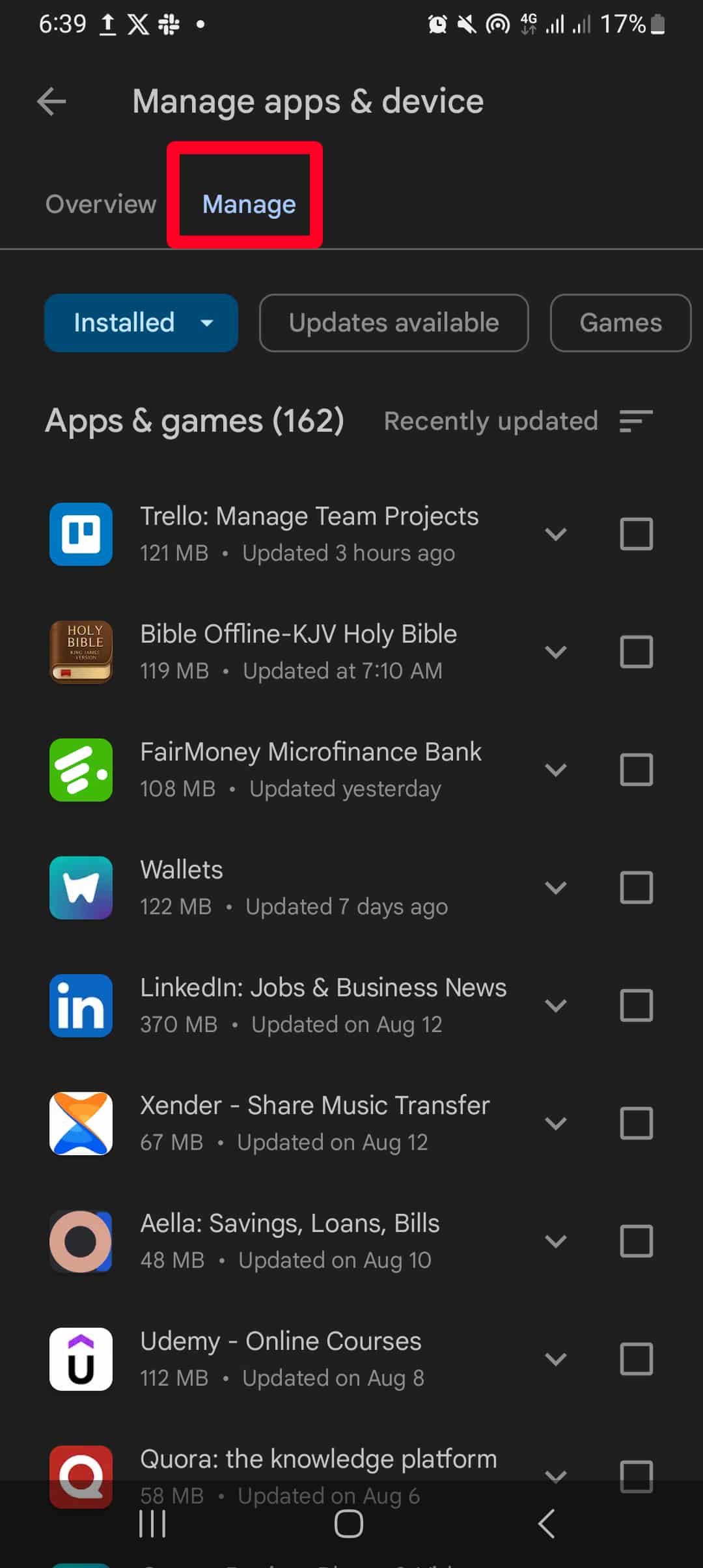
- Check the boxes beside apps to select them.
- Tap the trash icon in the upper-right corner.
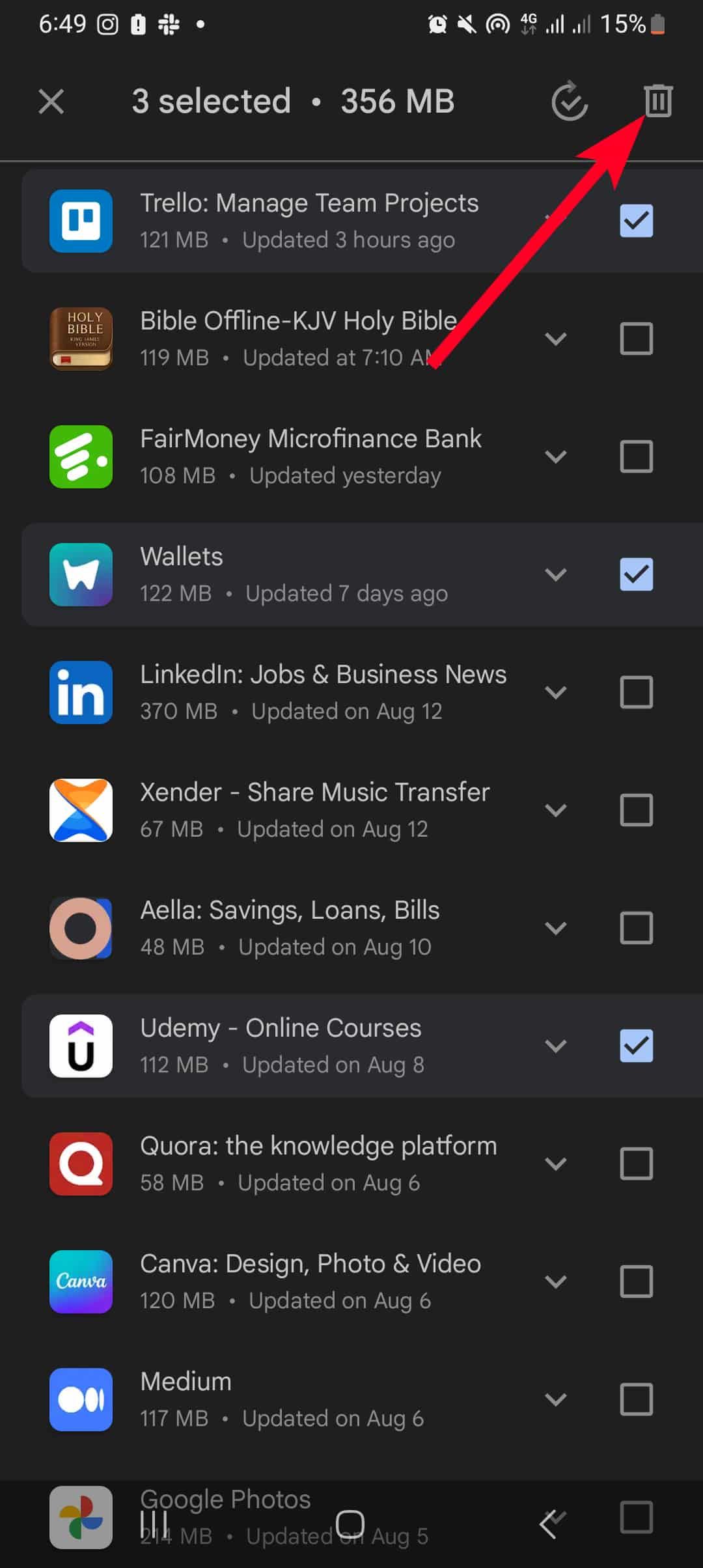
- Select Uninstall for confirmation.
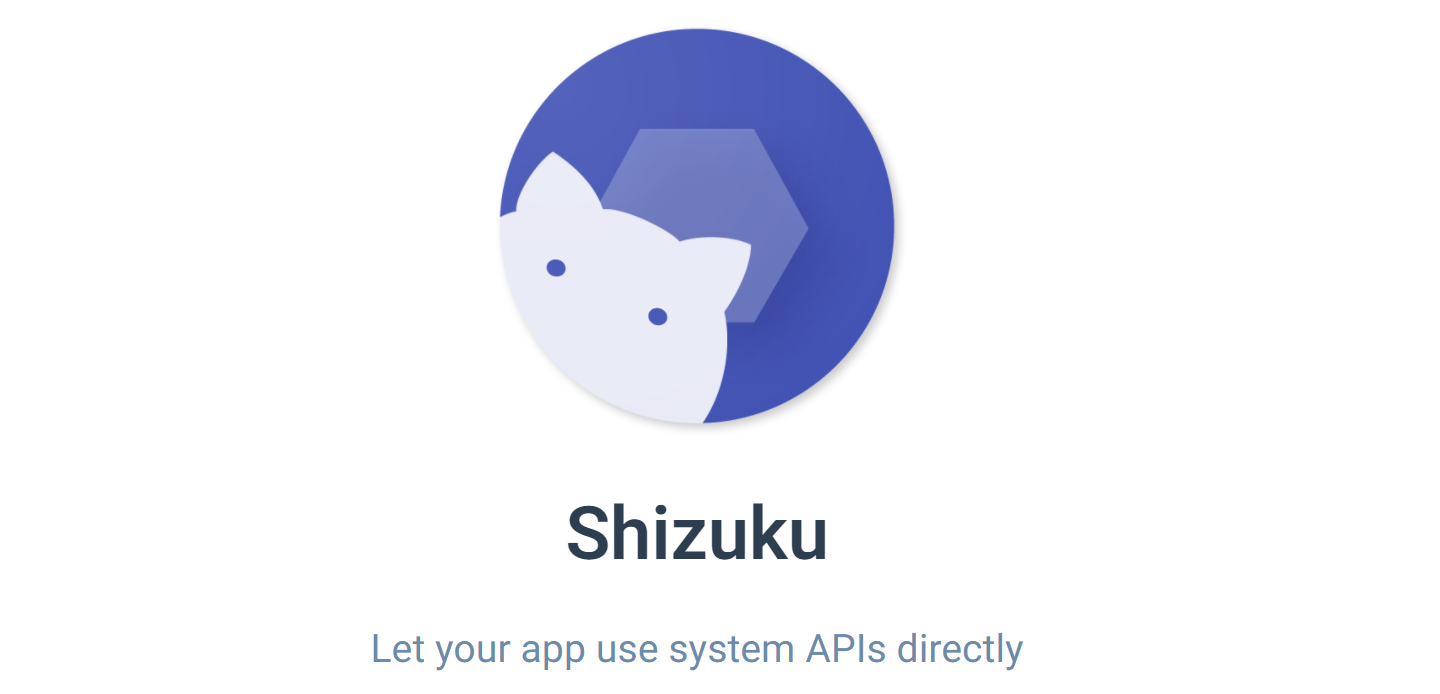
Related
Shizuku: How to freeze unwanted apps and bloatware on your Android phone or tablet
And you don’t even need full root access to get started
Hide apps to clear out the clutter and improve privacy
If you don’t want to uninstall certain apps to remove their icons, or you can’t, hiding them is another option. It removes the extra unneeded icons, and it hides sensitive apps you don’t want others to see. When hidden, these apps don’t appear on your home screen or in your app drawer. If you have a Samsung Galaxy phone, use Samsung Secure Folder or the home screen settings menu to hide them.
To hide apps from your home screen and app drawer, try these steps:
- Long press an empty spot.
- Select Settings.
- Tap Hide apps on Home and Apps screens.
- Select the apps you want to hide.
- Tap Done.
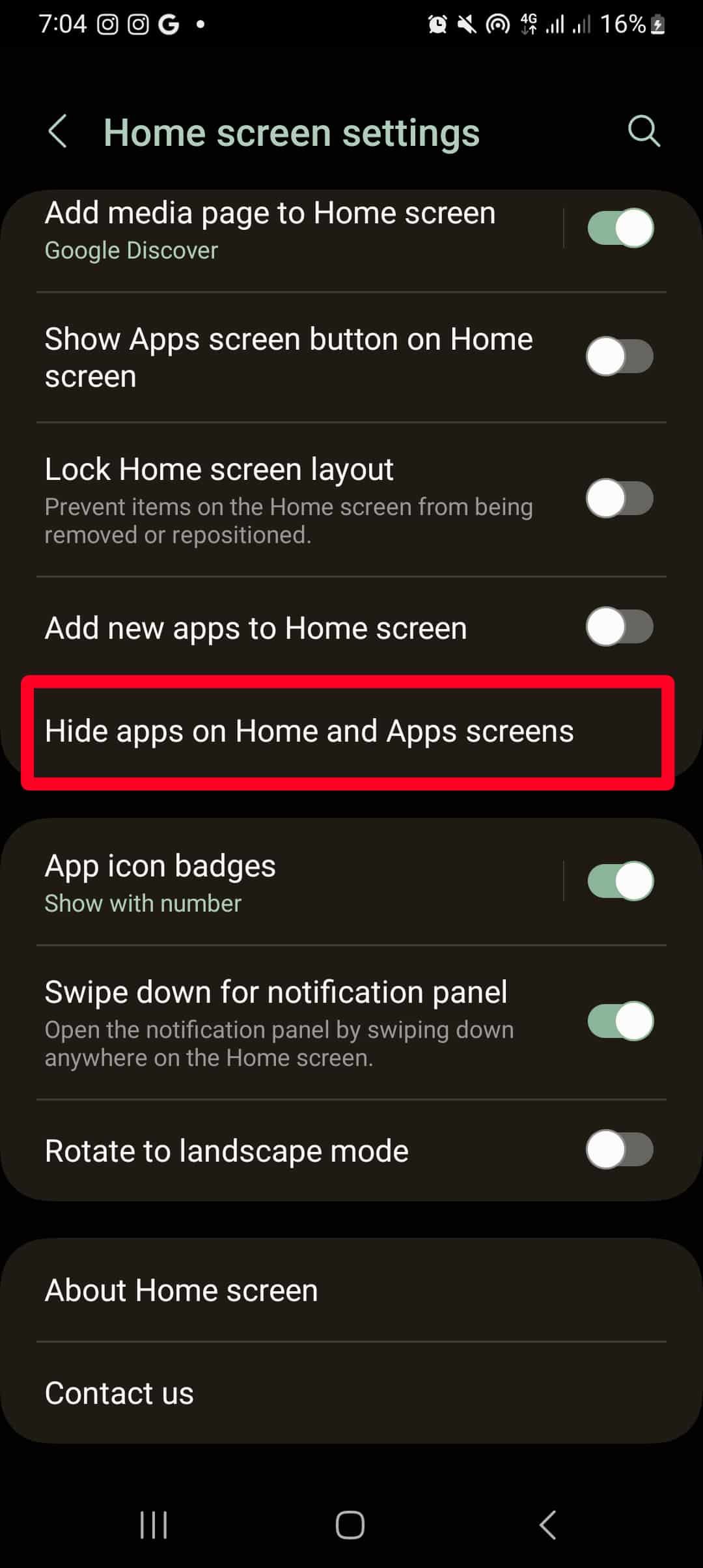
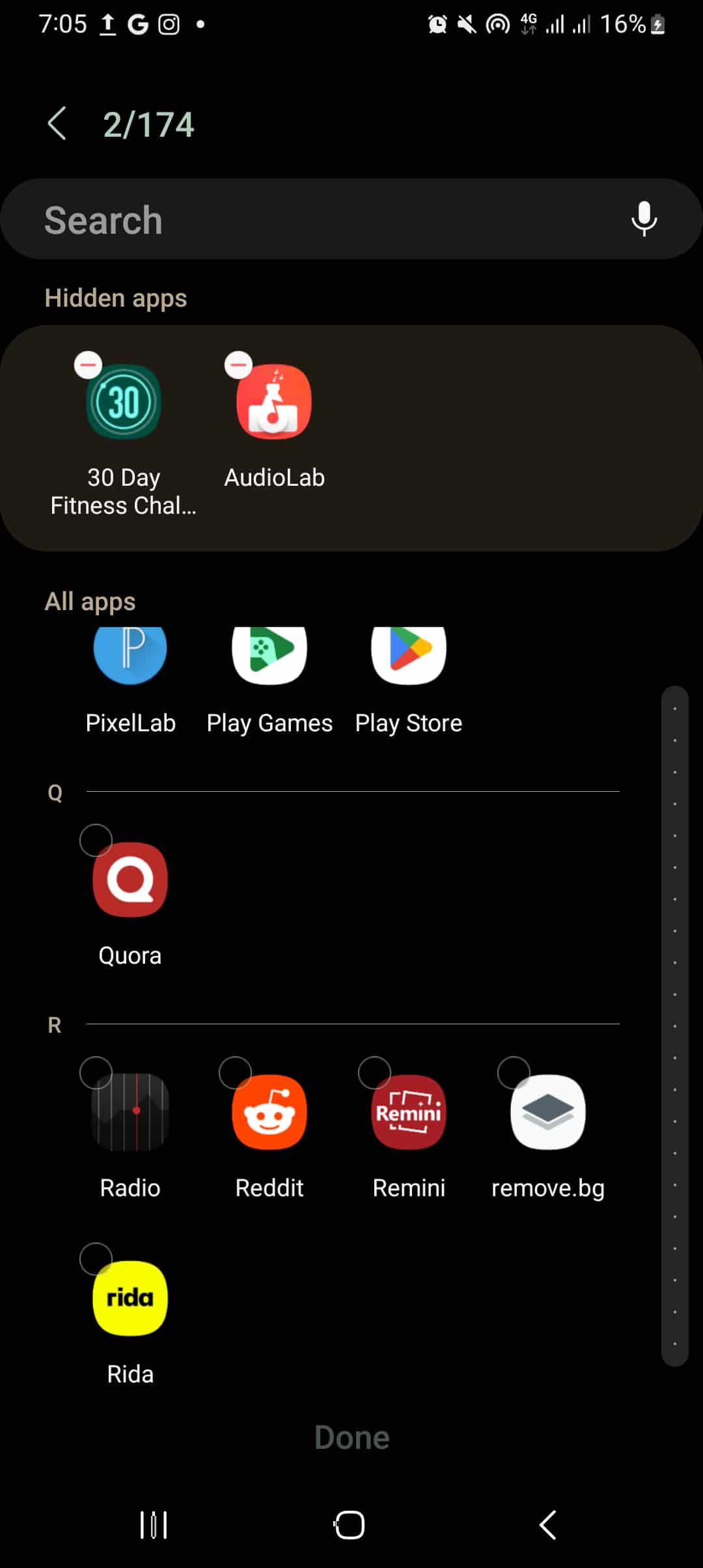
- Tap the minus sign beside hidden apps to unhide them.
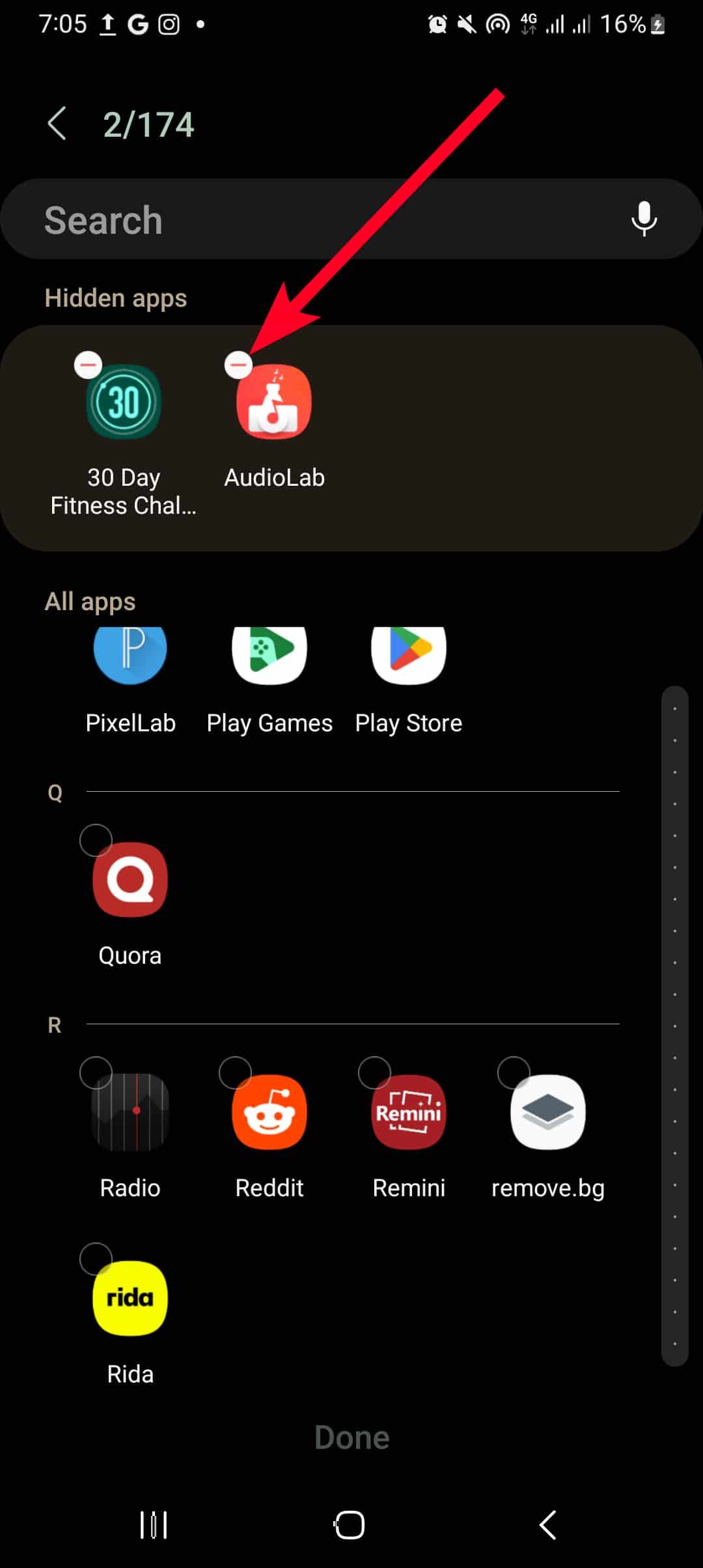
Clean up your app screen pages to remove empty spaces
On Samsung Galaxy phones, unnecessary empty spaces remain when you uninstall or hide apps in the app drawer. You could move apps around to cover them up, but that takes time. Instead, use the automatic clean-up feature.
To clean up the space left behind in your app drawer on a Samsung device, do this:
- Swipe up to open the apps screen.
- Tap the overflow menu (the three-dot icon) in the upper-right corner.
- Select Clean up pages.
- Tap OK for confirmation.
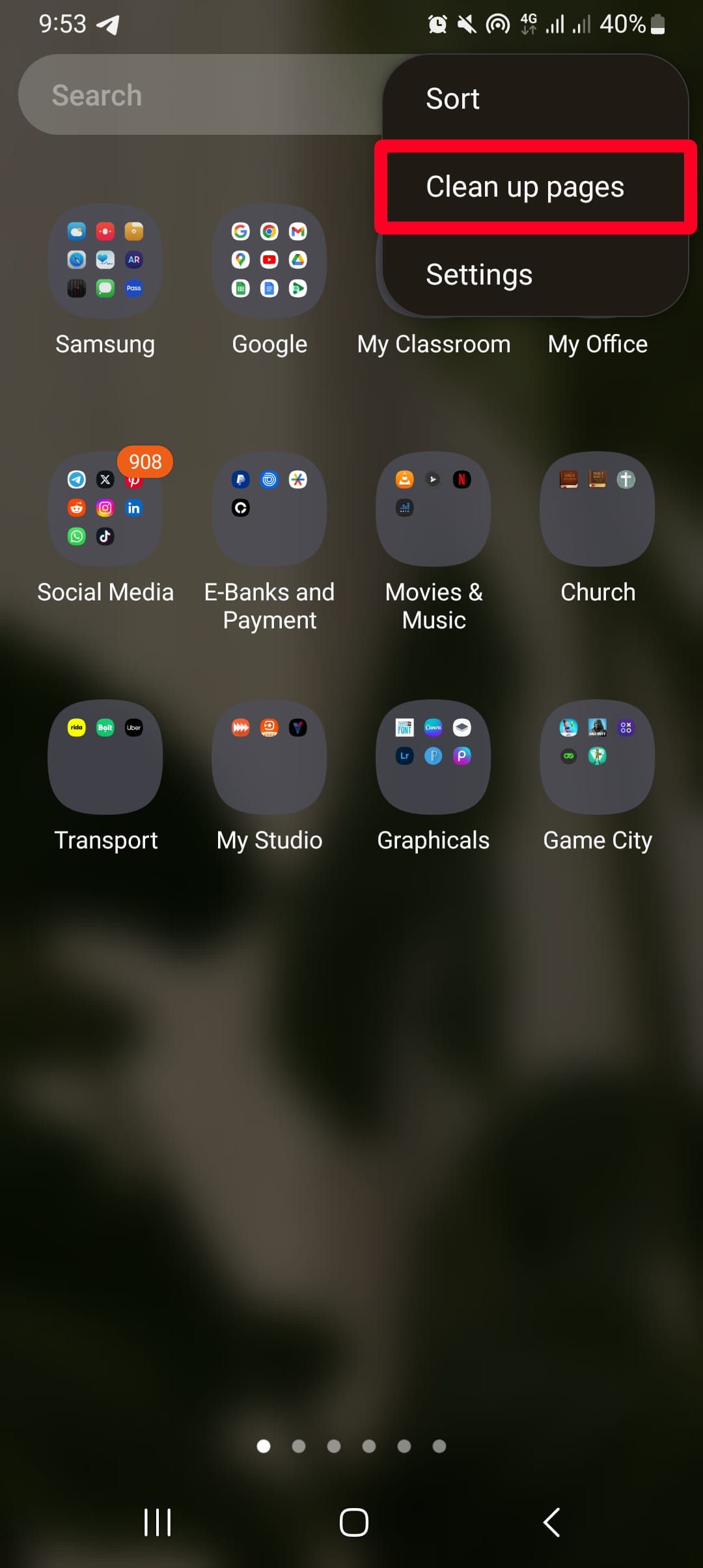
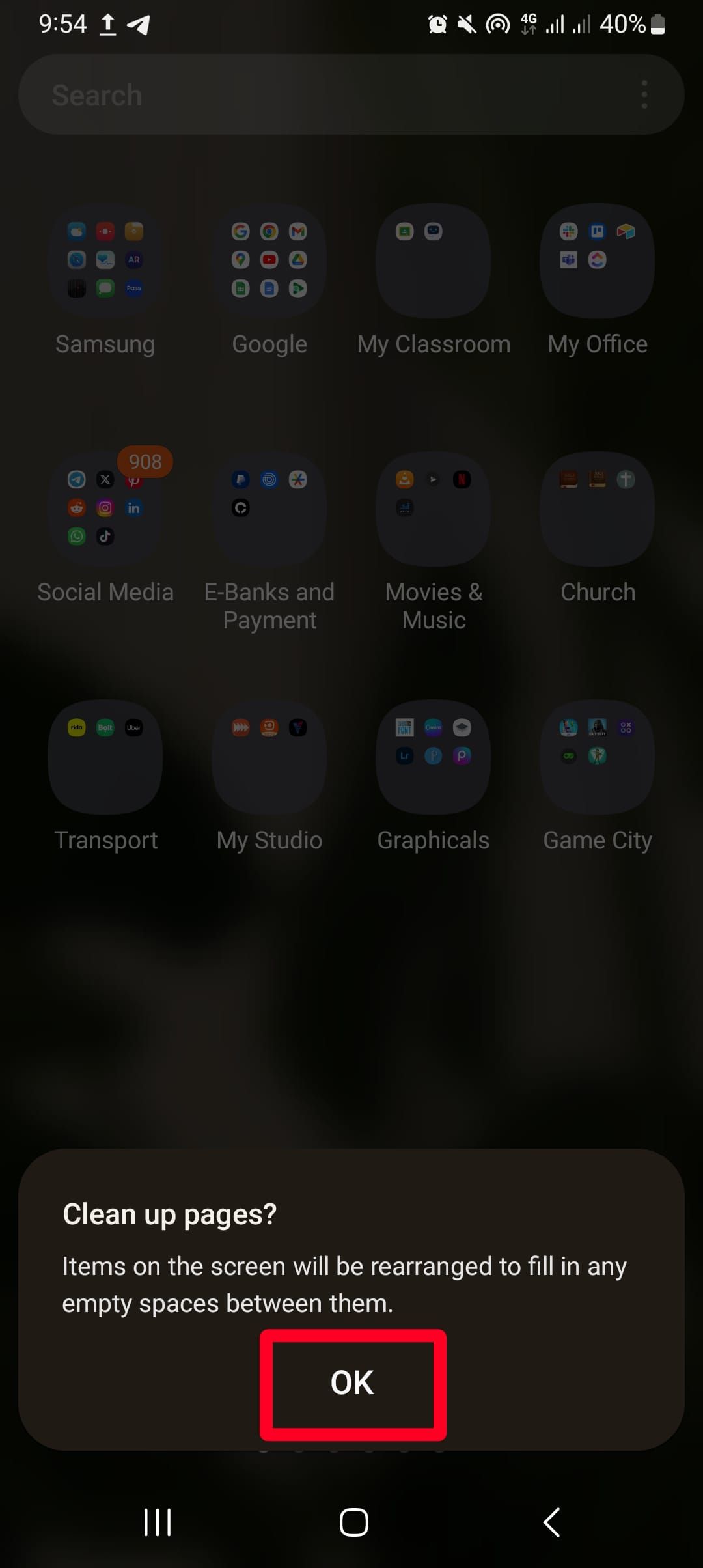
Manage your home screen pages as needed
If you remove the app drawer or add apps to your home screen, it may appear cluttered at first glance. You can add an extra page and move apps around to create more space. Also, if you don’t need a page, delete it. However, doing that removes every app on the page. Manage your home screen with the following steps.
- Drag an app toward the right side of your screen to create a new page.
- Alternatively, long press an empty space on the home screen.
- Swipe left. Then tap +.
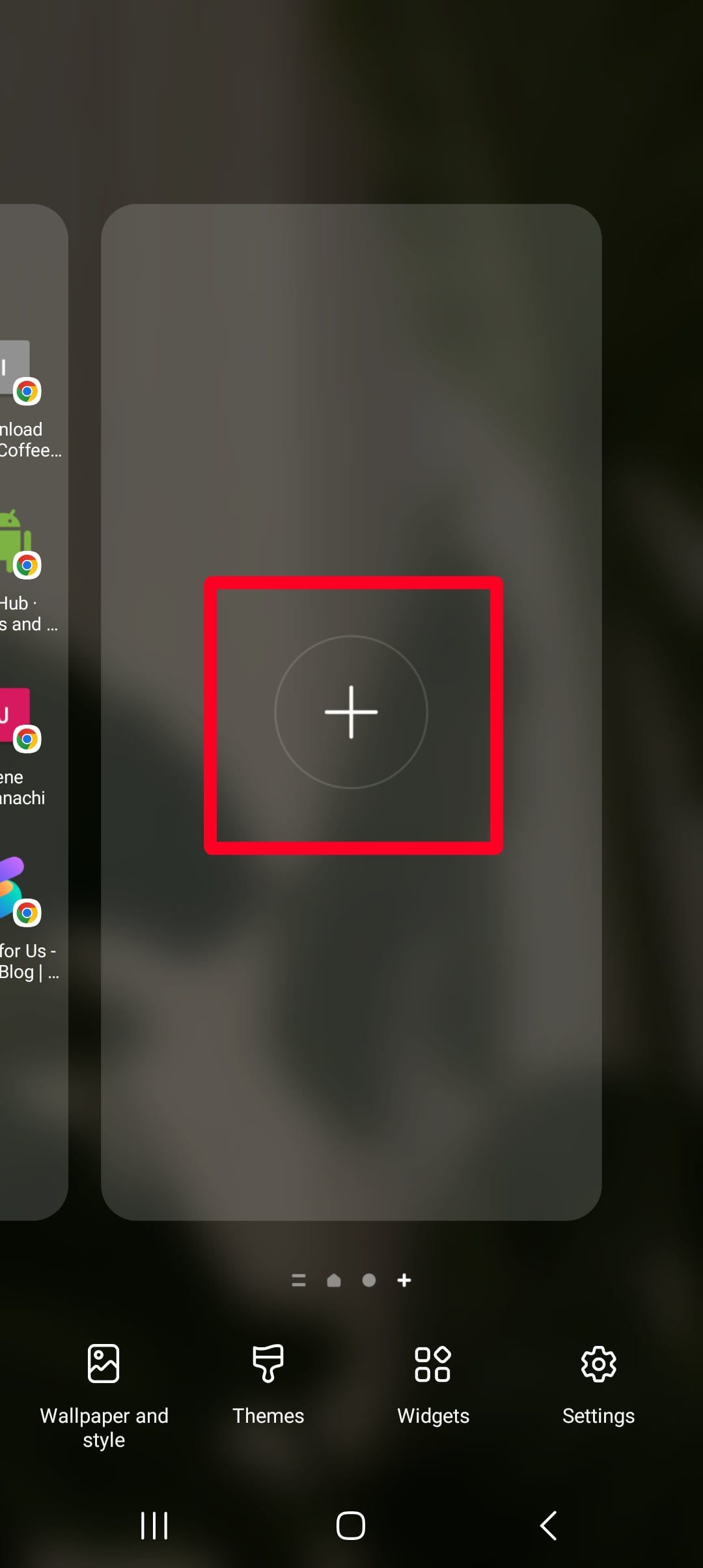
- To move apps to the new page, long press and hold them. Then, drag them toward the direction of the page.
- Tap the trash icon above a page.
- Select Delete for confirmation.
Keep your Android device clean and organized for ease of mind
Now that you’re equipped with the best methods to organize your home screen, declutter it and set it up to your liking. When you get a new phone without a backup, you must set up your home screen for the first time. The tips in this guide will help you get the most out of your Android home screen experience. When your home screen is just the way you want it, try one of these Android file managers to clean up your on-device storage. You’ll uncover hidden files and manage your device more efficiently.
Source link


